Is it necessary to rinse the turkey?
cocaty
11 years ago
Featured Answer
Sort by:Oldest
Comments (48)
cynic
11 years agoBumblebeez SC Zone 7
11 years agoRelated Discussions
rinsing seaweed for mulch and/or compost?
Comments (5)No, rinsing it is not worthwhile. It's a waste of your time, and more importantly, it's a waste of water. The amount of salt on seaweed is negligible for soil systems and compost systems. If you're adding so much seaweed that salt becomes a problem, then your soil system or compost system isn't going to be well balanced enough anyways to be successful. Salt is no good for plants but with enough organic matter in a system other than seaweed you will be fine. What I do is usually add seaweed but in small layers at a time, separated with other organic material like leaves/grass/etc. Space it out and don't go overboard. You'll be fine. Don't waste precious water and don't waste your time....See MoreCrushed stone path -- do you rinse the stone first?
Comments (2)lazygardens: What drained out is mostly silt and sand -- like the thick muck you might scrape up from the bottom of a river. It looks like it would harden into an impermeable layer on the landscape fabric. Perhaps it would soften again when wet. There are some smaller pieces that we hope to sift out of the fine silt, and use that as fines. We finished about 1/2 of the path yesterday before quitting for the day due to fatigue. We'll finish next weekend....See MoreBrining....to rinse or not to rinse?
Comments (21)To Nancy, the original poster, we have flipped, cheeseclothed, stuffed and not, ...done it all. For us it depends on the size of the bird and the oven. We brine. And rinse. Then let the bird rest in the fridge un-covered for a few hours to dry off. We never use the amount of salt in a recipe. We learned early on, years ago, from a disaster recipe for chicken thighs DH wanted to make 'as the recipe exactly' even though i thought it was far too much salt and soy sauce. This was years ago and we could not eat it. It is now one of our favorites, adjusted. Following a brined Turkey recipe without experience brining might have the same outcome. It really isn't necessary especially if your Turkey is 'enhanced'. All our ovens are different. Sizes and heat methods. Gas vs electric. One persons perfect bird 'recipe' is not necessarily mine or yours. Use your thermometer and check temp. If it works this year, the same good outcome will work the next time. Same oven. (we have a new oven so we watched it like a hawk this year) My mother has a new oven and it was shoe leather last year. She just did what she always did but never checked temp. (we were driving/traveling) so we could not help at all......See MoreFor those concerned about pre-rinsing dishes
Comments (65)Dadoes, My DW was chosen for its ability to dry, because my normal loads don't hold enough heat to work to dry the European way. Even so, I have to use specific settings to get the drying. The DW isn't worth using, IMH, if the dishes aren't dry, especially since they might sit clean for a couple of days and start smelling. There are still a few pools in depressions, of course, but those don't get that put away wet smell, and are inevitable, even with angled loading. It is within the realm of possibility that a fancier, newer DW would get dried, stuck gunk off better, or maybe a more aggressive detergent, but using a minimal amount of extra water to prevent failure of what I have, works for me....See Morelindac
11 years agocentralcacyclist
11 years agograinlady_ks
11 years agoNancy
11 years agocloudy_christine
11 years agodcarch7 d c f l a s h 7 @ y a h o o . c o m
11 years agodcarch7 d c f l a s h 7 @ y a h o o . c o m
11 years agolindac
11 years agoseagrass_gw Cape Cod
11 years agoarkansas girl
11 years agodcarch7 d c f l a s h 7 @ y a h o o . c o m
11 years agodcarch7 d c f l a s h 7 @ y a h o o . c o m
11 years agoarkansas girl
11 years agoannie1992
11 years agoBumblebeez SC Zone 7
11 years agodcarch7 d c f l a s h 7 @ y a h o o . c o m
11 years agoarkansas girl
11 years agoannie1992
11 years agodixiedog_2007
11 years agoarkansas girl
11 years agodcarch7 d c f l a s h 7 @ y a h o o . c o m
11 years agodixiedog_2007
11 years agodcarch7 d c f l a s h 7 @ y a h o o . c o m
11 years agocooksnsews
11 years agoannie1992
11 years agoAnnie Deighnaugh
11 years agocyalexa
11 years agoarkansas girl
11 years agofoodonastump
11 years agolindac
11 years agocj47
11 years agoruthanna_gw
11 years agodcarch7 d c f l a s h 7 @ y a h o o . c o m
11 years agofoodonastump
11 years agodcarch7 d c f l a s h 7 @ y a h o o . c o m
11 years agofoodonastump
11 years agodcarch7 d c f l a s h 7 @ y a h o o . c o m
11 years agofoodonastump
11 years agoAnnie Deighnaugh
11 years agoruthanna_gw
11 years agodcarch7 d c f l a s h 7 @ y a h o o . c o m
11 years agocynic
11 years agoAnnie Deighnaugh
11 years agodixiedog_2007
11 years agodcarch7 d c f l a s h 7 @ y a h o o . c o m
11 years ago
Related Stories
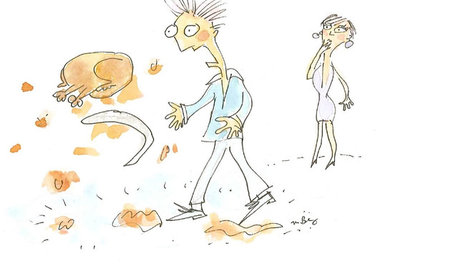
MOST POPULARThanksgiving Tales: When the Turkey Tanks
Houzz readers prove adept at snatching victory from the jaws of entertaining defeat
Full Story
DECORATING GUIDESGo Bold (and Green) with Eco-Friendly Carpet Tiles
Get Ideas For Your Own Recyclable Rug Made of Colorful Carpet Squares
Full Story
HOUSEKEEPINGTackle Big Messes Better With a Sparkling-Clean Dishwasher
You might think it’s self-cleaning, but your dishwasher needs regular upkeep to keep it working hard for you
Full Story
LIFEGet the Family to Pitch In: A Mom’s Advice on Chores
Foster teamwork and a sense of ownership about housekeeping to lighten your load and even boost togetherness
Full Story
CONTEMPORARY HOMESHouzz Tour: Geometric Patterns Unify a Cambridge Home
Repeating motifs, materials and colors run throughout this updated 19th-century Massachusetts residence
Full Story
MOST POPULARHow to Choose the Right Kitchen Sink
Learn about basin configurations, sink shapes, materials and even accessories and specialty sinks
Full Story
DECLUTTERINGDownsizing Help: How to Edit Your Belongings
Learn what to take and what to toss if you're moving to a smaller home
Full Story
HOUSEKEEPINGHow to Clean Your Fridge, Inside and Out
Keep your refrigerator clean and fresh, while you gain storage space and lose those ‘UFOs’
Full Story
GREEN BUILDINGOff the Grid: Ready to Pull the Plug on City Power?
What to consider if you want to stop relying on public utilities — or just have a more energy-efficient home
Full Story
HOME OFFICESThe 20 Most Popular Home Office Photos of 2015
Technology paves the way for space-saving work areas, while designers make up for small sizes with style
Full Story






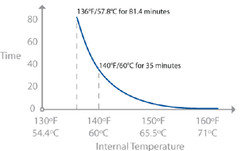
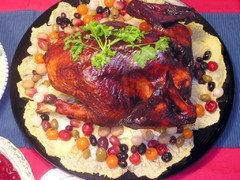
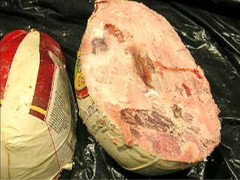
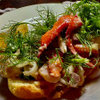
sushipup1